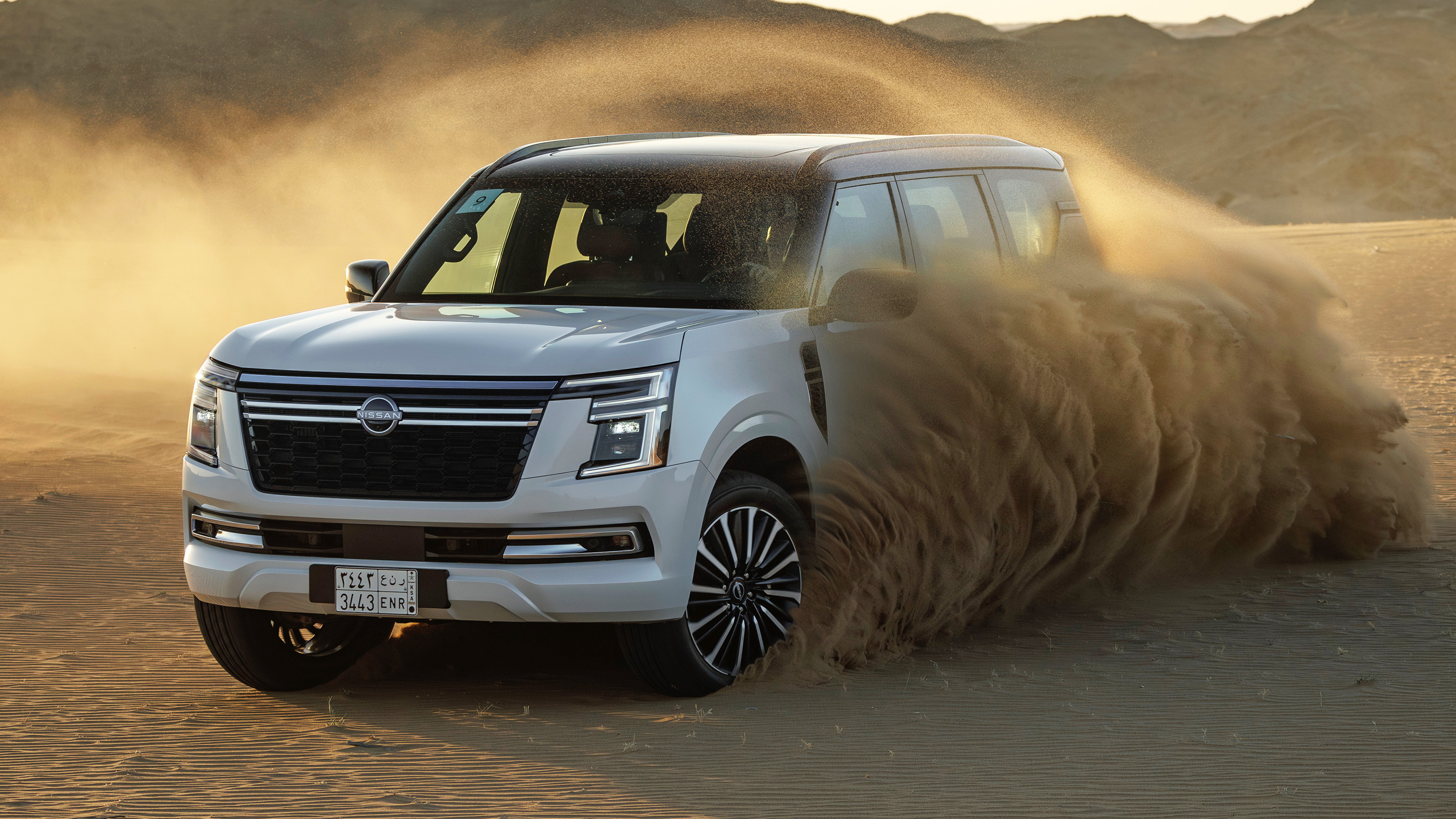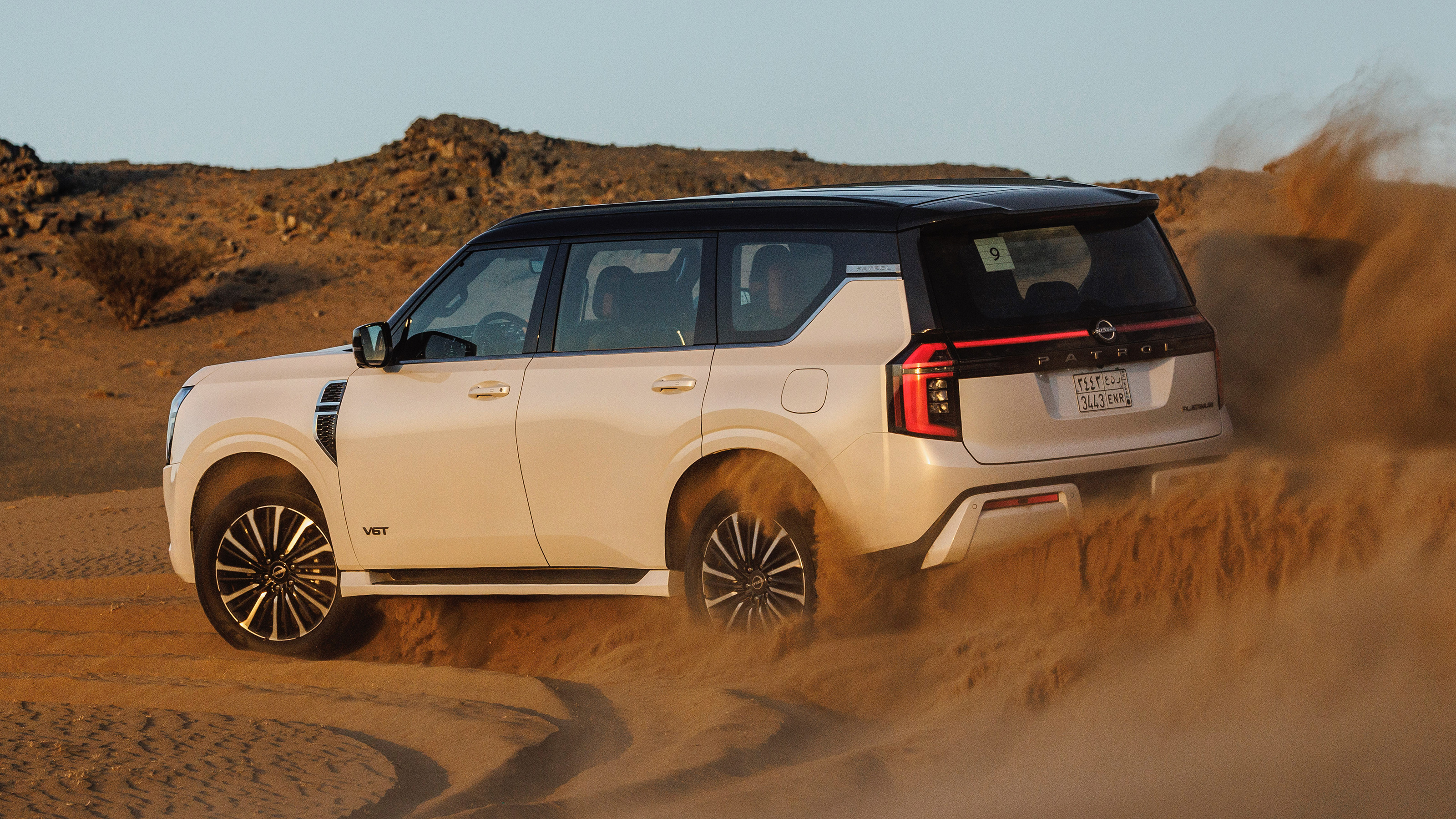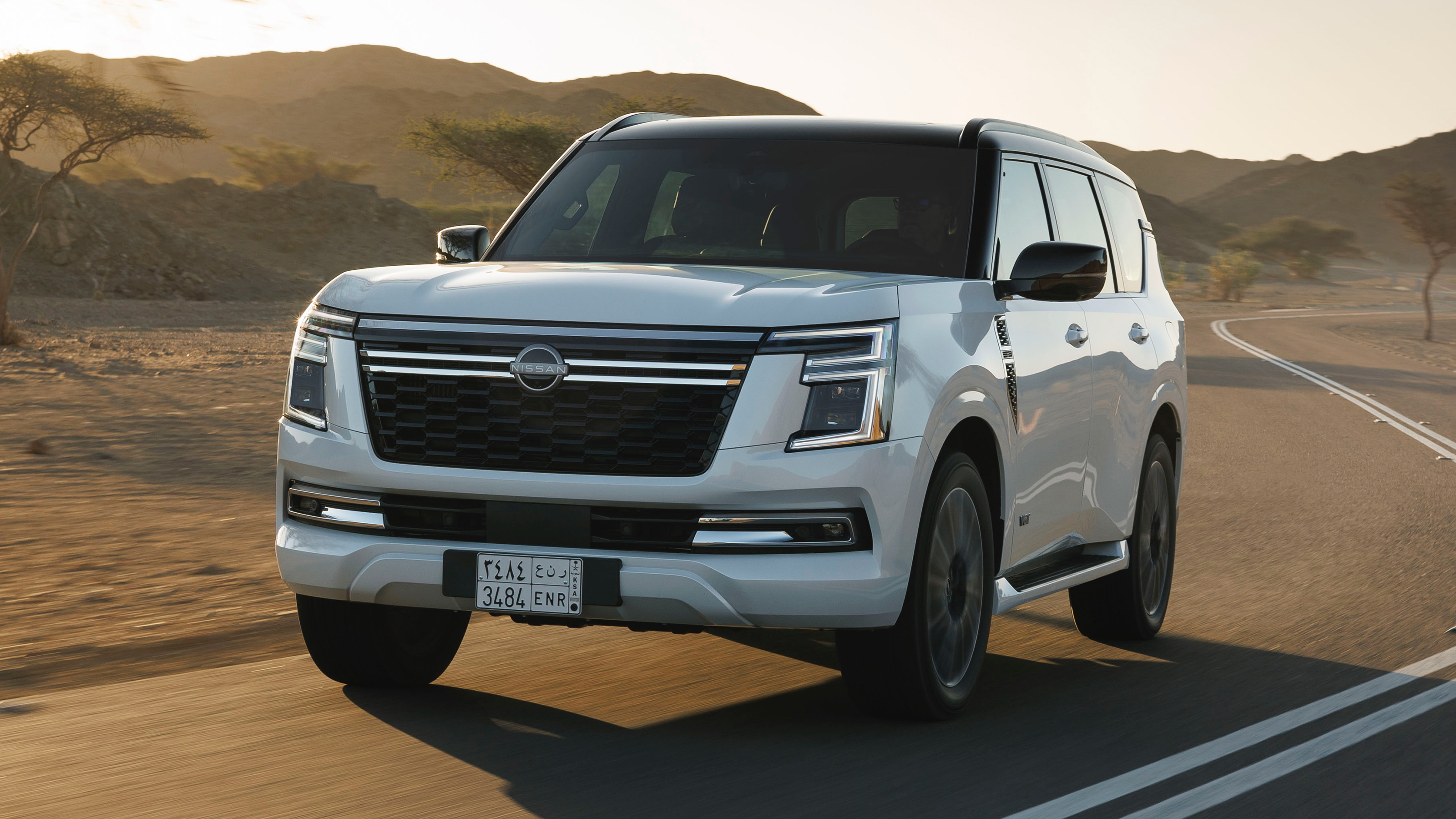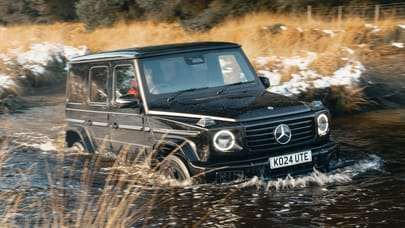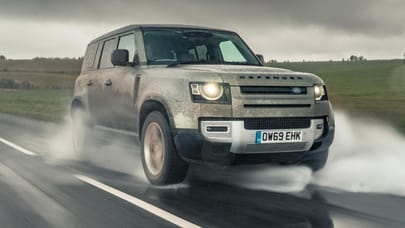
Nissan Patrol review
Good stuff
Formidable reputation, giant cabin, strong new V6, big step over the old one
Bad stuff
Not available in Europe, huge size and weight, no hybrid, plain looks
Overview
What is it?
It’s the seventh generation of a full-size Japanese off-roader that traces its origins back to 1951. Sound familiar? It’s also an identical back story to the Toyota Land Cruiser, a car that looms large over Nissan’s latest Patrol.
Not that the Patrol is small. It’s a whopper. 5.2 metres long, over 2.7 tonnes and powered by a pair of V6 engines, the only one you probably care about being the 3.5-litre twin turbo which develops 419bhp and 516lb ft and hurls this gargantuan SUV to 62mph in 6.6 seconds. There’s also a naturally aspirated 3.8 with 312bhp and 284lb ft. Which doesn’t seem enough given the mass involved. But you won’t have failed to notice the elephant in the room here: no diesel, no hybrid.
I understand the diesel thing, but why no hybrid?
Because of where the Patrol is sold. The mistake is to think that this car, even though it has a nameplate we know and love, is designed with Europe in mind. It’s not – in fact it’s not going to be sold in Europe at all. Or Japan for that matter.
This is a car designed, engineered and developed from the ground up to excel in the Middle East. Seriously. They sell more of these across this region – over 20,000 a year – than anywhere else on the planet, including America (where it’s badged the Nissan Armada). Then look at what other countries are listed among the 28 territories it will sell in: Australia, Canada, South Africa, the Philippines.
All places where fuel tends to be cheap, so no-one worries too much about economy and emissions and the move to electrification isn’t a pressing concern. That it returns a claimed 27.4mpg is needlessly impressive, more relevant is that 100-litre fuel tank’s ability to carry you a long way. The Land Cruiser 250 – a more global product – is available with either diesel or mild hybrid petrol.
Ok, understood, so what goes on underneath?
Wait, we haven’t finished yet, because there’s another reason hybrid doesn’t work here – and not just that the Patrol would have wound up weighing as much as a small planet. Complexity. The Patrol has the reputation it does because it’s built tough. Adding electrification would have jeopardised that.
It still uses body on frame construction, even if it hasn’t had beam axles since the fifth-generation Y61 died in 2010. It’s all independent suspension, newly air sprung and height adjustable and now features a nine-speed automatic gearbox complete with low range.
Sounds like a hardcore off-roader, but it doesn’t look like one.
As we said, it’s designed for the environment. Off-roading in the Gulf means lamping through dunes, which doesn’t need much in the way of axle articulation so solid axles aren’t necessary. But getting traction in sand means you need to drop tyre pressures, so top-spec Patrols come with a built-in compressor.
But yeah, the way it looks: it’s a big, bulky, bland bit of design. Shoulder height bonnet, chrome, looks like a good facelift of its predecessor rather than an all new car, and when rivals are successfully riffing on their history (not just the Land Cruiser, but Mercedes G-Class and Land Rover Defender), this looks like a missed opportunity to bring back a bit of the Y61’s magnificent boxiness.
How does it drive?
We’ll get on to this in more detail on the Driving tab, but it’s a big step over the old one, while at the same time falling short of the on-road standards set by genuine luxury off-roaders such as the Range Rover – and Defender for that matter. Blame the ladder frame chassis for that.
The V6 is strong and pretty much as tuneful as the outgoing 5.6-litre V8. Better response and more torque even if it takes a moment for the turbos to wake up. And you do need them to wake up given the weight they’ve got to deal with.
Its off-road settings are easy to use via a control dial on the console, with separate buttons to select low range and the rear diff lock. The centre diff and ride height are controlled automatically.
Does it convince as a luxury car inside?
Depends on your idea of luxury. As far as kit and equipment goes, yes. But for materials and design, no. A pair of 14.3-inch screens across the dash and nifty Biometric Cooling (infrared sensors monitor your body temperature and adjust the cooling automatically) are no substitute for the tactile materials and elegant architecture that the best Europeans offer.
Again, however, it’s a big improvement on the Y62 that came before. And if it’s softer leather you want, expect that to come when Infiniti gets round to badging this a QX80. And no, you won’t be able to get one of those in Europe either.
Thankfully for a car that’s approaching two metres tall and more than that wide, it is massive inside, with seating for up to seven while still having space for 623 litres of clobber. It’s also reasonable value, with prices starting at around $62,000, running up to $105,000 for a top spec version.
Should I care about the Patrol?
Here’s the crux of it for us. Yes, because it has a proud history that’s just as long, varied and interesting as the Land Cruisers. A first generation Patrol was the first car to scale Mt Fuji in 1951, a few years later the second gen car was the first to cross Australia’s Simpson desert. Over the years the Patrol clashed axles with the Land Cruiser and had an equally formidable reputation for not breaking or going wrong. Together they drove Land Rover out of the world’s toughest environments. But globally, by expanding the Land Cruiser brand across three distinct model ranges (Heavy Duty 70-Series, the cool new 250 and the Patrol’s most direct rival, the 300-series that’s not available in the UK either) Toyota has prevailed.
End result? Once sold in 90 territories, the seventh-gen Patrol will only be available in 28. And as the market has shrunk, the Patrol has been deliberately targeted into those areas and become more specialised. This must be one of the only cars in the world designed specifically to excel in sand dunes. It’s wonderfully well suited to the Middle East. But elsewhere? It’s harder to make a case for it.
What's the verdict?
Does this new Patrol do the job it needs to do? Yes. Does it do much more than that? No. It’s a conservative update, designed to make people who already had an old one buy a new one. As a result what it’s unlikely to do is attract a new audience to the brand which, given Nissan’s well documented issues at the moment, should surely have been a priority.
Compare and contrast to Toyota’s approach with the Land Cruiser 250 which now looks set for sales success. The Patrol is big, but to our eyes it isn’t particularly clever or far-sighted and we can’t help wishing Nissan had pushed the boundaries a bit further, particularly with the design.
But then it’s hard to know how to judge a car that doesn’t conform to our idea of luxury and style given we’re not the audience it’s aimed at. We’ve scored it a six in the full knowledge that in the environment it’s designed for, where durability and toughness are king, it’s hugely popular for a reason.
The Rivals
Trending this week
- Car Review
BMW iX3




